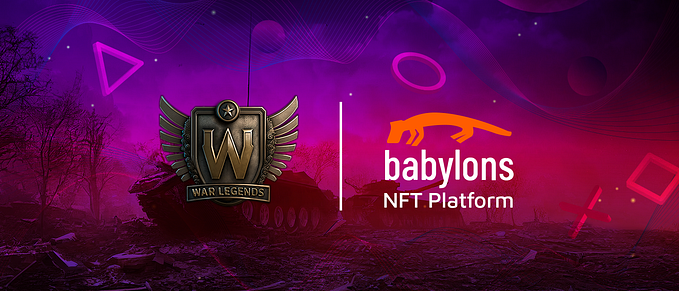Top 10 Benefits of Using Network GPUs for Deep Learning

In the rapidly evolving world of artificial intelligence and deep learning, staying ahead of the curve is crucial.
One technology that’s making waves in this field is network GPUs. These powerful tools are transforming the way we approach deep learning, offering unprecedented speed, efficiency, and scalability.
In this comprehensive guide, we’ll explore the top 10 benefits of using network GPUs for deep learning and how they’re reshaping the AI landscape.
What are Network GPUs?
Network GPUs, or Graphics Processing Units, are specialized hardware designed to handle complex mathematical computations in parallel. Unlike traditional CPUs, which process tasks sequentially, GPUs can perform multiple calculations simultaneously, making them ideal for deep learning applications.
Top 10 Reasons to Use Network GPUs
These powerful processing units offer unparalleled speed and efficiency, enabling researchers and developers to tackle complex algorithms and large datasets with ease.
1. Enhanced Parallel Processing Capabilities
By leveraging the power of network GPUs, deep learning models can process vast amounts of data concurrently. This parallel processing capability allows for:
- Faster training of neural networks
- More efficient handling of complex algorithms
- Improved performance in tasks like image and speech recognition
For example, projects like ZkAGI, which focus on advanced AI applications, benefit greatly from the parallel processing power of network GPUs. This enables them to handle complex computations required for privacy-preserving AI and machine learning techniques.
2. Increased Training Speed for Models
One of the most significant advantages of using network GPUs is the dramatic reduction in training time for deep learning models.
The Speed Revolution in Model Training
Network GPUs can accelerate the training process of deep learning models by orders of magnitude. This speed boost is crucial for:
- Rapid prototyping and experimentation
- Faster iteration on model architectures
- Quicker deployment of AI solutions in production environments
Real-World Impact on Training Speed
In practice, tasks that might take weeks or months on traditional CPU systems can be completed in days or even hours using network GPUs. This acceleration is particularly beneficial for large-scale projects and research initiatives that require extensive model training.
3. Improved Model Accuracy
The speed and efficiency of network GPUs don’t just save time — they also contribute to enhanced model accuracy.
How Speed Translates to Accuracy
With network GPUs, researchers and data scientists can:
- Run more training iterations in less time
- Experiment with larger and more complex datasets
- Fine-tune hyperparameters more extensively
These capabilities lead to more refined and accurate models, pushing the boundaries of what’s possible in deep learning.
4. Scalability for Large Datasets
In the era of big data, the ability to handle massive datasets is crucial. Network GPUs excel in this area, offering unparalleled scalability.
Tackling Big Data Challenges
Network GPUs provide:
- Efficient processing of terabytes or even petabytes of data
- Seamless scaling of deep learning models to accommodate growing datasets
- Enhanced performance in distributed computing environments
Scalability in Practice
This scalability is particularly valuable in fields like genomics, climate modeling, and large-scale image processing, where the volume of data is constantly expanding.
5. Reduced Latency in Real-Time Applications
For AI applications that require real-time processing, low latency is critical. Network GPUs significantly reduce latency, enabling faster response times.
The Power of Low Latency
Network GPUs minimize latency by:
- Processing data in parallel, reducing wait times
- Optimizing data transfer between memory and processing units
- Enabling faster inference in deployed models
Real-Time AI in Action
This reduced latency is crucial for applications like autonomous vehicles, real-time speech translation, and financial trading algorithms, where split-second decisions can make a significant difference.
6. Cost-Effective Resource Utilization
While network GPUs may seem like a significant investment upfront, they often prove to be more cost-effective in the long run.
The Economics of GPU Computing
Network GPUs offer cost benefits through:
- Reduced training time, leading to lower operational costs
- Higher throughput, allowing for more efficient use of resources
- Lower power consumption per unit of computation compared to CPU-only systems
Cost Efficiency in Practice
Organizations can achieve substantial savings on infrastructure and energy costs by leveraging network GPUs for their deep learning projects.
7. Support for Advanced Architectures
As deep learning models become more sophisticated, they require hardware that can keep up. Network GPUs are designed to support these advanced architectures.
Empowering Cutting-Edge AI
Network GPUs excel in supporting:
- Complex neural network architectures like Transformers and GANs
- Multi-modal learning models
- Hybrid AI systems that combine different types of neural networks
Advanced AI in the Real World
Projects like ZkAGI utilize this capability to implement sophisticated privacy-preserving AI models, pushing the boundaries of what’s possible in secure and decentralized AI applications.
8. Increased Flexibility and Adaptability
The versatility of network GPUs makes them ideal for a wide range of deep learning tasks.
Adapting to Diverse AI Challenges
Network GPUs offer:
- Dynamic resource allocation for different types of workloads
- Support for various deep learning frameworks and libraries
- Easy integration with existing AI pipelines and workflows
Flexibility in Action
This adaptability allows organizations to tackle diverse AI projects without the need for separate, specialized hardware for each task.
9. Enhanced Collaboration and Sharing
Network GPUs facilitate better collaboration among researchers and data scientists.
Fostering Collaborative AI Development
Network GPUs enable:
- Shared access to powerful computing resources
- Easier replication of experiments and results
- Collaborative development of large-scale AI models
Collaboration in Practice
This collaborative aspect is particularly beneficial in academic research and open-source AI projects, where sharing resources and results is crucial for advancing the field.
10. Optimized Energy Consumption
Despite their power, network GPUs can be more energy-efficient than traditional CPU setups for deep learning tasks.
Green AI Computing
Network GPUs achieve energy efficiency through:
- Higher performance per watt of power consumed
- More efficient handling of complex computations
- Reduced overall system power requirements for equivalent tasks
Energy Efficiency in the Real World
This optimization is not only cost-effective but also aligns with the growing focus on sustainable and environmentally friendly computing practices.
The Future of Deep Learning with Network GPUs
As we’ve explored, network GPUs offer a multitude of benefits for deep learning applications. From enhanced processing capabilities and increased training speeds to improved accuracy and scalability, these powerful tools are reshaping the AI landscape.
Projects like ZkAGI are at the forefront of leveraging these benefits, pushing the boundaries of what’s possible in privacy-preserving and decentralized AI. As the field of deep learning continues to evolve, network GPUs will undoubtedly play a crucial role in driving innovation and enabling breakthroughs that were once thought impossible.
Whether you’re a researcher, data scientist, or AI enthusiast, embracing network GPUs can significantly enhance your deep learning projects. As we look to the future, it’s clear that network GPUs will continue to be a cornerstone technology in the exciting world of artificial intelligence and machine learning.








